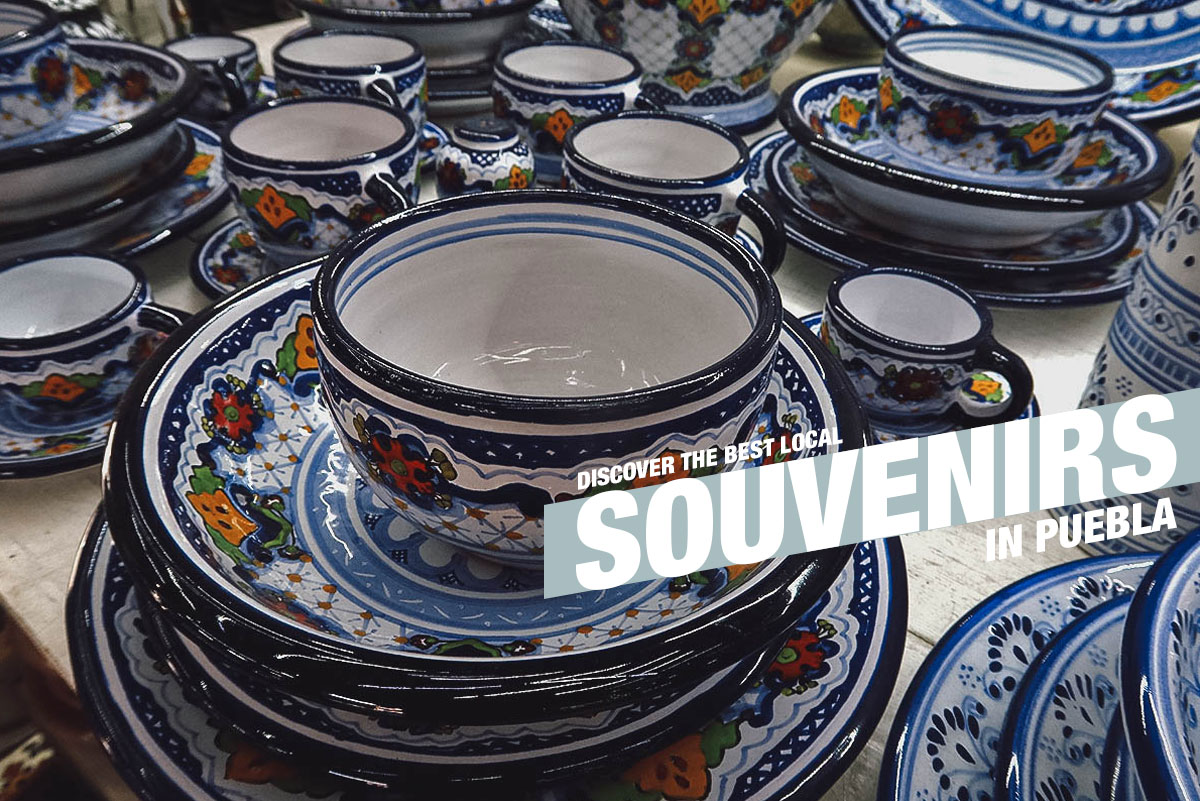Souvenirs are a big part of any vacation. We like to bring them home as mementos of our trips.
In Puebla, like in any other destination, you can buy different types of souvenirs to remind you of your time in this central Mexican city. They have the usual souvenirs like keychains and fridge magnets but you can also find more interesting souvenirs that are unique to Puebla.
In this article, we’ll show you ten of the best souvenirs you can buy in Puebla and where you can find them.
VISIT PUEBLA QUICK LINKS
TOURS
To make your trip to Puebla more fun, we’ve compiled links to recommended tours and activities here. Click on the link for a guide to some of the best Puebla Tours.
- Guided Tours: Puebla Sightseeing and Food Tours
- Day Trips: Day Trips to Puebla from Mexico City
- Cooking Classes: Puebla Cooking Classes
HOTELS
Top-rated hotels in the Historic Center, the best area to stay for people on their first trip to Puebla. Click on the link for more Puebla hotel recommendations.
- Luxury: Casona de los Sapos Hotel Boutique
- Midrange: Hotel Boutique Casareyna
- Budget: Hostal Casa De Arcos
OTHER SERVICES
- Mexico Tourist Card (FMM)
- Travel Insurance (with COVID cover)
- Mexico SIM Card / eSIM
- Car Rental
- Mexico Bus Tickets
PUEBLA TRAVEL GUIDE
Check out our detailed guide to Puebla City to help you plan your trip.
Save This on Pinterest!
No time to read this guide on the best souvenirs in Puebla? Click on the save button and pin it for later!

THE BEST MEXICAN SOUVENIRS IN PUEBLA
10. Standard Souvenirs
Like any major tourist destination, you’ll find different types of souvenirs in Puebla. Refrigerator magnets and keychains with the word “Puebla” are among the most common but our favorites are these cute bottle openers. We bought several pieces to keep for ourselves and to give away as gifts.
You’ll typically find the same designs at different souvenir shops in Puebla so there’s no need to go to every store. Most, if not all, are fridge magnets as well. We particularly liked the calavera (skull) designs so we brought home several of those.

9. Calaveras
The calavera is an important cultural symbol in Mexico. Calavera means “skull” in Spanish and refers to these decorative skulls that are often painted in intricate patterns and bright colors. They come in different sizes and are typically made from clay or sugar, the latter being strongly associated with the El Dia de Los Muertos (Day of the Dead) holiday in Mexico.
We’ll be experiencing our first El Dia de Los Muertos in Oaxaca City later this year so we’ll definitely be consuming our fair share of sugar skulls then. These edible calaveras made from powdered sugar, chautle (vegetable adhesive), lemon, egg whites, and vegetable dyes are known locally as alfeñique.
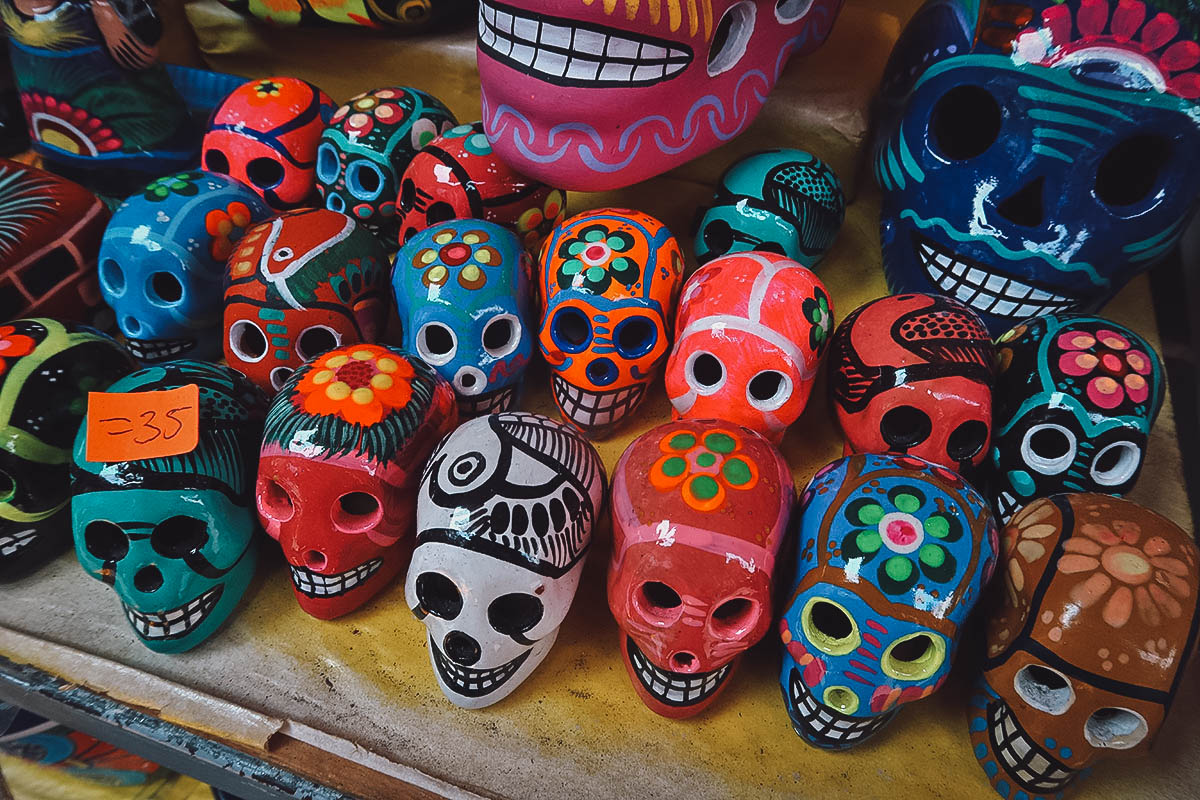
8. Anything Frida
The Mexican artist Frida Kahlo isn’t from Puebla but you’ll find merchandise with her likeness on it in different souvenir shops throughout the city. In fact, we haven’t been to any city in Mexico that didn’t have her likeness or name emblazoned on a t-shirt, bag, hotel, or restaurant. Frida Kahlo is arguably the most iconic figure in Mexican pop culture, which is incredible considering she’s only a quarter Mexican by blood.
I won’t get into too much detail here but Frida Kahlo was born to a German father and a mestiza (half Spanish) mother in Coyoacan, a neighborhood in Mexico City. She was known for her many portraits and self-portraits and was married to famed Mexican artist and muralist Diego Rivera.
We went on a food tour in Mexico City and according to our guide, Frida became an icon in Mexico mainly for her style and her life. She lived through a great deal of suffering and pain due to polio and a tragic accident she survived in her teens.
If you visit Mexico City, then be sure to check out La Casa Azul in Coyoacan. Also known as the Blue House, it’s Frida’s birth house and where she lived for many years with Diego Rivera. Today, it’s one of the most fascinating and popular museums in Mexico City.
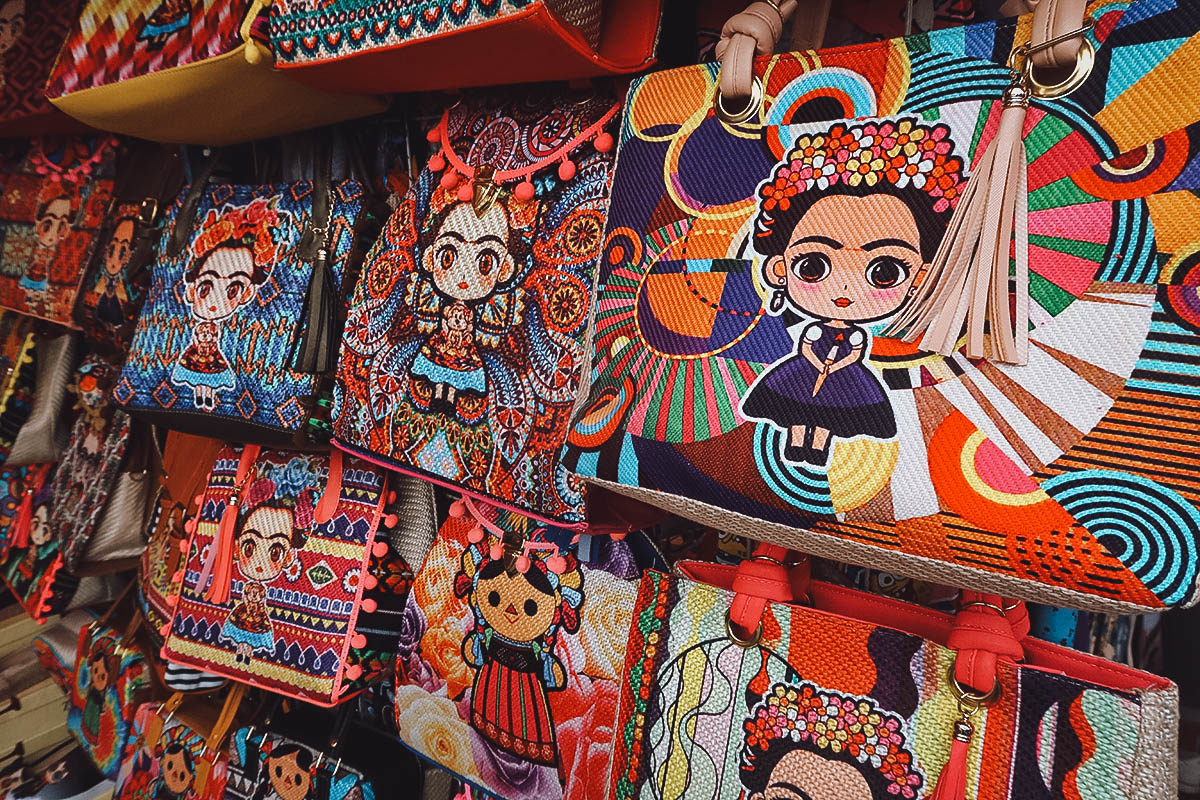
7. Alebrijes
I fell in love with these brightly colored animal figurines in Mexico. Known locally as alebrijes, they’re hand-carved and painted wooden sculptures of animals and mythical creatures from Mexican folklore.
I found alebrijes for sale throughout Mexico and became fascinated by them so I read up on their history. I assumed the practic went back hundreds of years but apparently, the tradition isn’t as old as it seems.
The first alebrijes were produced in the mid-1940s by a cartonero (papier-mache sculpturist) from Mexico City named Pedro Linares. He fell gravely ill in 1943 and dreamt about these strange mythical creatures that he would later recreate in papier-mache. His work caught the attention of several influential people, including Diego Rivera and Frida Kahlo. Over time, the chosen medium shifted from papier-mache to wood, and so was born the tradition of alebrijes.
I only found small simple versions of alebrijes in Puebla but you can find much more intricate versions in other parts of the country, like Oaxaca City. They can range in price from a few hundred Mexican pesos to tens of thousands.

These larger, more intricate alebrijes were from a house museum in Merida. Some of these larger pieces can be so stunning.
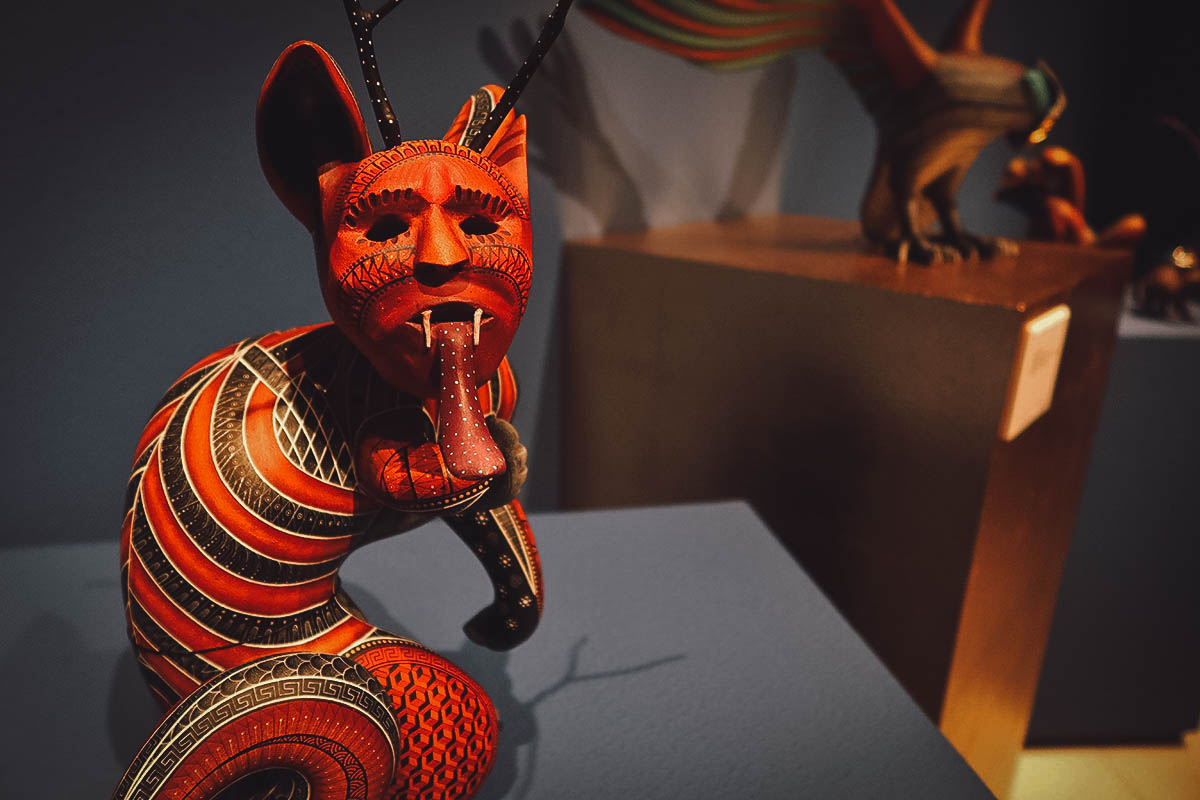
6. Mexican Rag Dolls
These Mexcian rag dolls are another popular souvenir you can find in many parts of the country. Though they’re all made with fabric, they can come in different variations depending on where they’re from. Some of the most popular types of Mexican rag dolls include the Maria doll, the Lele doll, and the Donxu doll.
Mexican rag dolls are a product of the Otomi and Mazahua indigenous people of Mexico. They took their craft with them to Mexico City in the 1970s and continue to produce these dolls throughout central Mexico – mostly in Queretaro, Hidalgo, Mexico State, Michoacan, Guanajuato, Veracruz, and Puebla.
Like Japanese sarubobo dolls, these Mexican rag dolls weren’t created as toys but as charms to protect children from evil spirits. I can’t really distinguish them yet but I believe the most common type of Mexican rag doll sold in Puebla is the Lele doll. You can find them in souvenir shops throughout the city.

RELATED ARTICLE: Discover 20 Awesome Things to Do in Puebla, Mexico
5. Arbol de la Vida
Like alebrijes, these incredibly colorful and ornate sculptures became one of my favorite things in Mexico. They’re known locally as Arbol de la Vida or “Tree of life” sculptures.
Arbol de la vida sculptures are made from clay and produced in central Mexico. They’re largely associated with Metepec in the State of Mexico but the practice of creating these clay sculptures started in the city of Izucar de Matamoros in Puebla state. They were originally created to teach the Biblical story of creation to the natives during the early colonial period.
Like alebrijes, arbol de la vida sculptures can range in size from small to very large. The biggest and most ornate versions of these visually striking sculptures can fetch tens of thousands of Mexican pesos. Though they were originally created with a Biblical theme, they’re now often made with themes unrelated to the Bible.
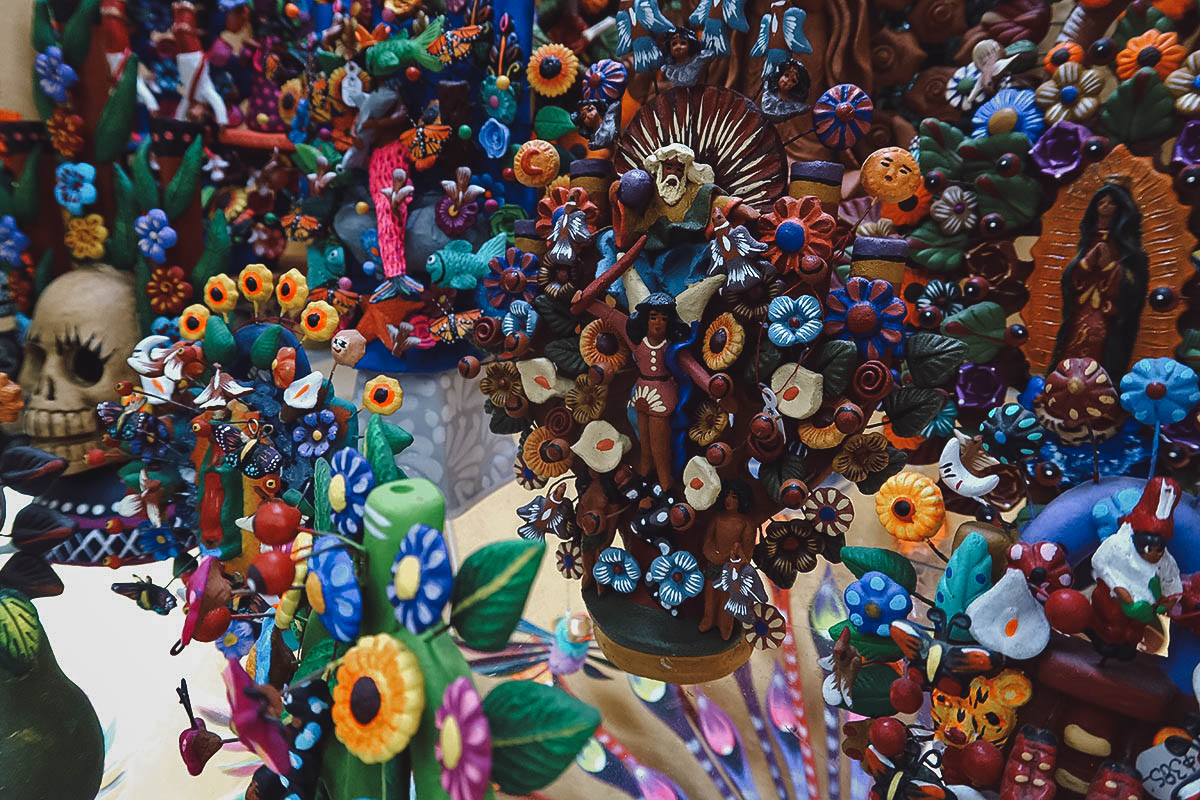
4. Poblana Dresses
China Poblana refers to the traditional dress worn by the women of Puebla. It’s an embroidered ensemble consisting of multiple pieces – a white blouse, skirt, a white slip, loop, and a shawl.
China poblana dresses are stunning but not something that the average tourist can actually wear. Thankfully, you’ll find many souvenir shops selling much simpler but equally beautiful dresses in Puebla. They’re hand-embroidered with floral patterns and the same attentive detail as the china poblana.
I found it curious that the traditional dress of Puebla was called “China Poblana” so I did some research. Interestingly, it may have been inspired by a woman who was born in Asia. You can read more about the connection in this article about La China Poblana.
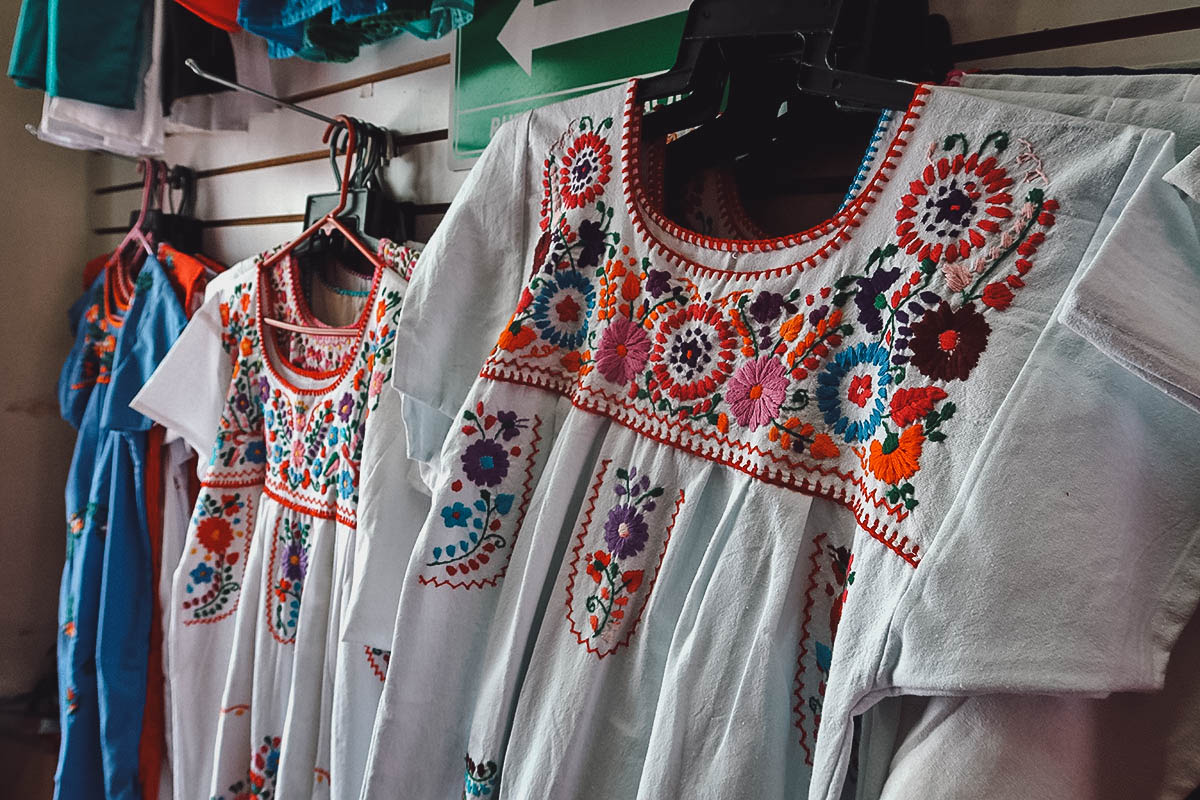
3. Dulces Tipicos de Puebla
If you have a sweet tooth, then you definitely want to bring back a few of these. Dulces tipicos means “typical sweets” in Spanish and refers to all the different types of traditional sweets produced in Puebla.
Thanks to the influx of foreign influences and ingredients, Puebla is home to over 300 types of traditional sweets. They were created at convents during colonial times and were initially made as gifts to be given to the convents’ benefactors. Today, they’re one of the most popular souvenir food items from Puebla and can be found at many candy and souvenir shops throughout the city.
Dulces tipicos from Puebla are so popular that one street in the downtown area – Avenida 6 Oriente – is nicknamed “Calle de los Dulces” thanks to its many traditional sweet shops. There are many kinds you can buy but among the most popular are camotes, tortitas de santa clara, and los borrachitos.
Check out our article on must-try dulces tipicos in Puebla to learn which kinds to buy.
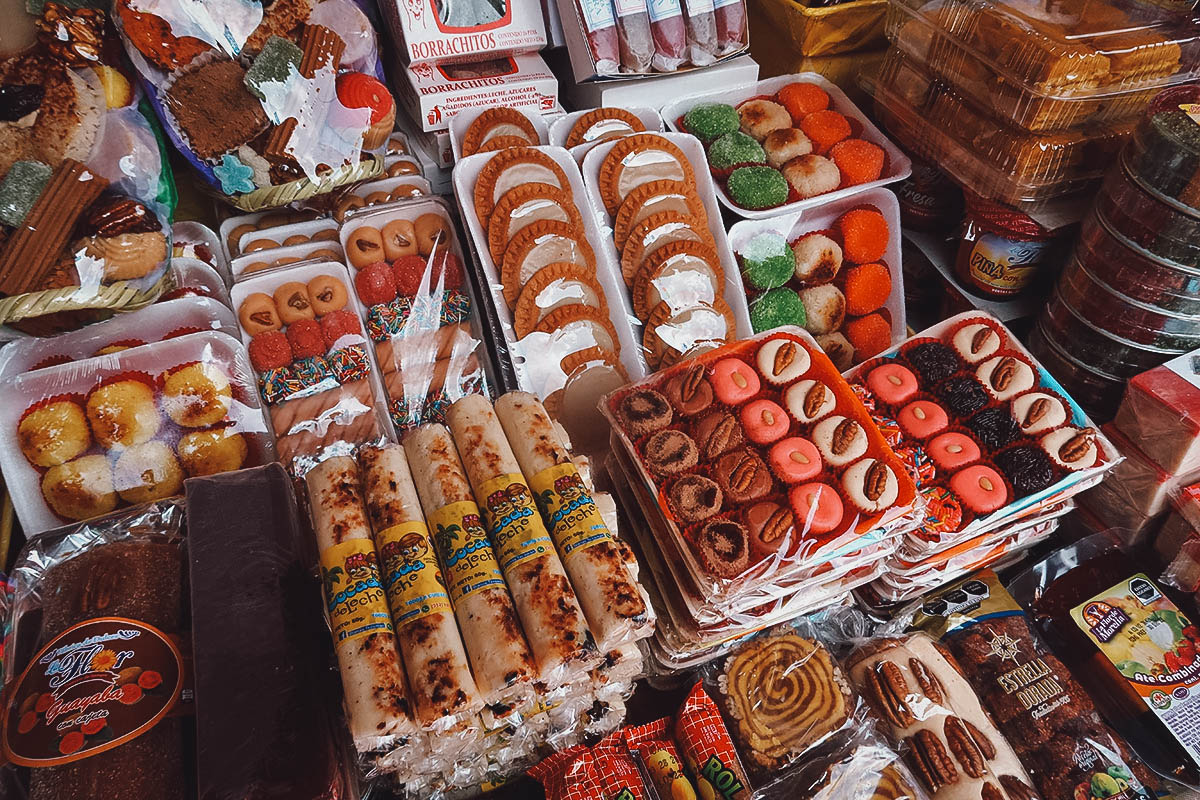
2. Talavera Pottery
There are a few things associated with Puebla but only a few are truly emblematic of the city and state. Mole poblano is one, talavera pottery is another.
Talavera refers to a Mexican and Spanish pottery tradition that originated in Talavera de la Reina in Spain. The method was brought to Mexico by the Spanish during the early colonial period where it thrived in the state of Puebla and San Pablo del Monte in Tlaxcala thanks to the region’s high-quality of natural clay.
Take a walk around the historic center of Puebla and you’ll find that talavera tiles are a big reason why the architecture in Puebla looks different from other cities in Mexico. Personally, it’s one of the reasons why we fell in love with this city. You’ll find them everywhere – on the facades of buildings, in churches, and sold from souvenir shops throughout downtown Puebla.
The color blue dominates talavera pottery but you’ll find many pieces made with other colors as well like orange, red, green, and yellow. Like barro negro pottery from Oaxaca, it’s one of the most famous types of pottery produced in Mexico.
Please note that not all Talavera pottery is created equal. Many shops sell cheaper souvenir items like the ones below but the best Talavera pieces are certified.
Certified Talavera pieces bear the initials of the artist and the name/logo of the Puebla workshop that produced them. They also come with a special hologram that certifies their authenticity. Expect pieces like that to be considerably more expensive.
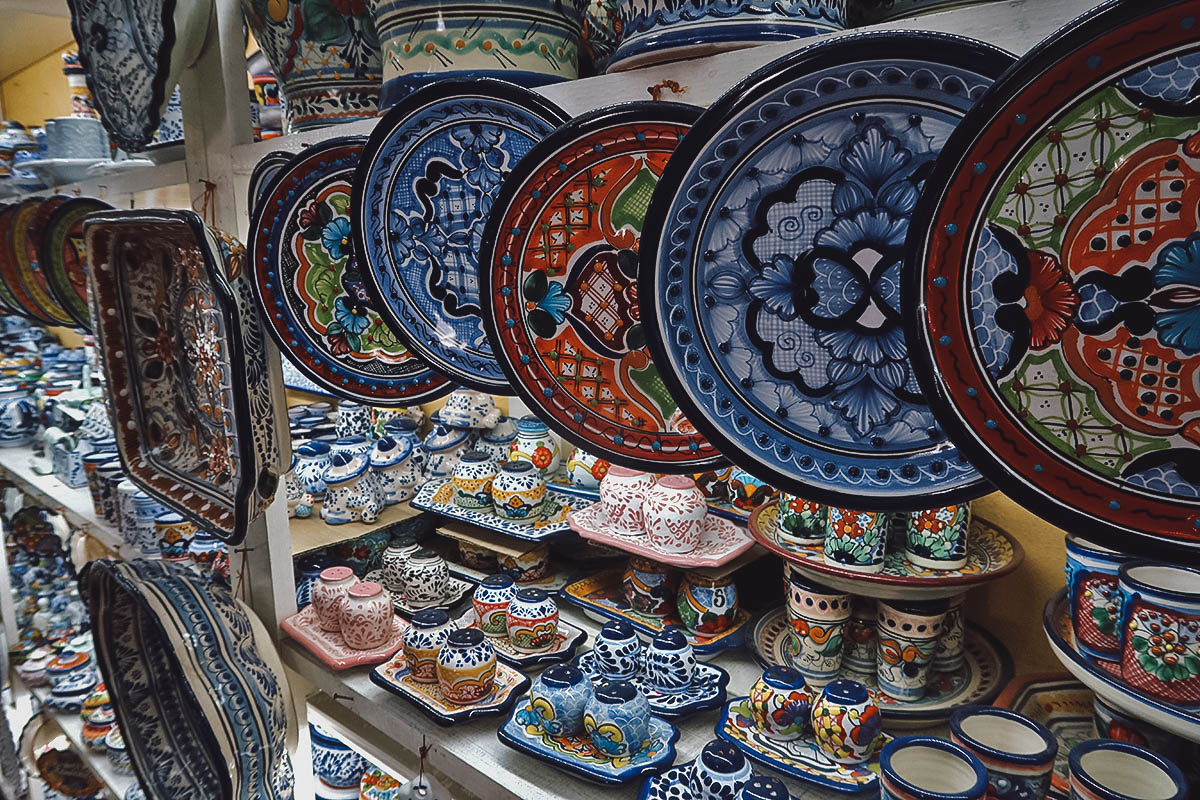
1. Mole Poblano
If you’re visiting Puebla because of its reputation as a premier food destination in Mexico, then you already know about mole poblano. It’s a defining dish in Mexican cuisine and regarded by many as the national dish of Mexico.
There are hundreds of known mole recipes in Mexico but when someone says “mole”, they’re typically referring to mole poblano. It refers to a thick dark sauce made with about twenty ingredients, some of the most important being cocoa and several different types of chili pepper.
You can enjoy this emblematic dish at the many traditional Mexcian restaurants in Puebla but you can also bring it home in these vacuum-sealed takeaway packs. You can find pre-packaged mole at many souvenir shops in downtown Puebla but I recommend buying it from Fonda Tipica La Poblana. It’s personally one of my favorite mole restaurants in Puebla.
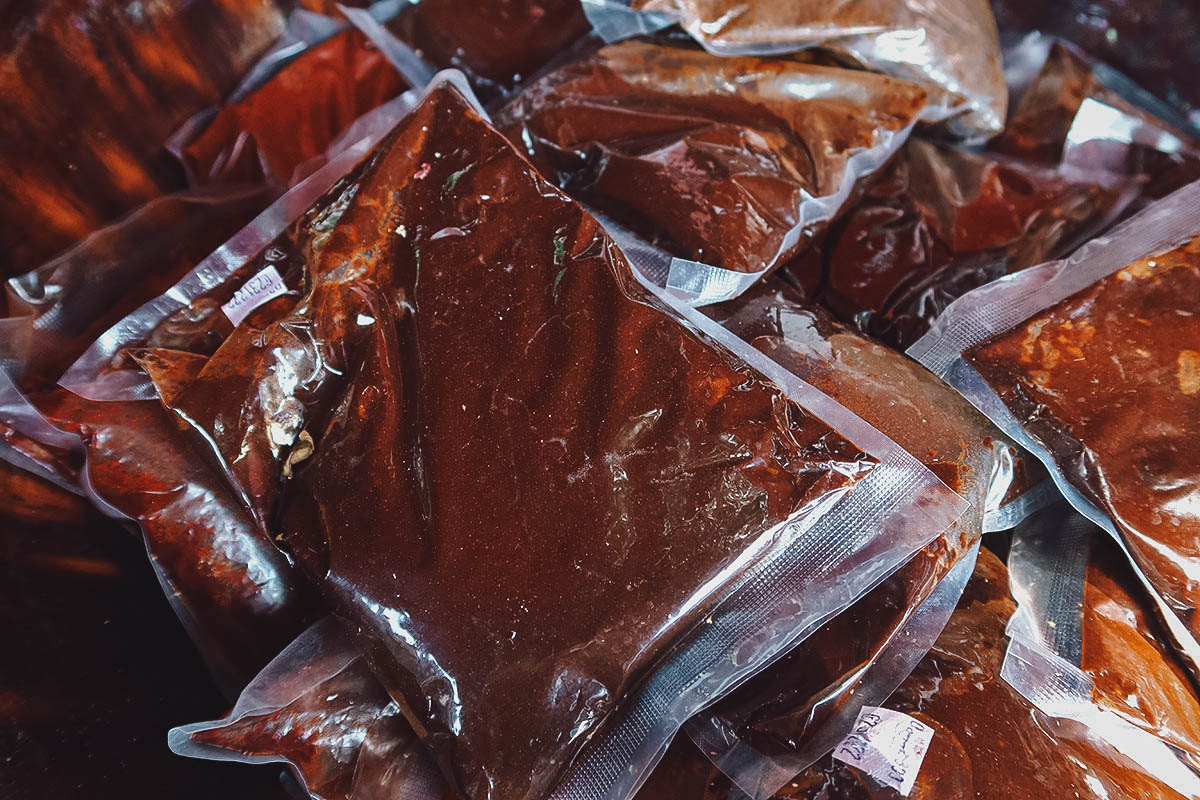
THE BEST SOUVENIR SHOPS IN PUEBLA
You’ll find many souvenir shops throughout downtown Puebla but the best place to buy souvenirs is Mercado El Parian. It’s a short 10-minute walk from the zocalo and consists of about two dozen stores clustered together in a pleasant, open-air space.
Every store at the market carries a vast array of Puebla merchandise so you can search through each one to find what you need. It’s definitely one of the most convenient places to buy Mexican souvenirs in Puebla.
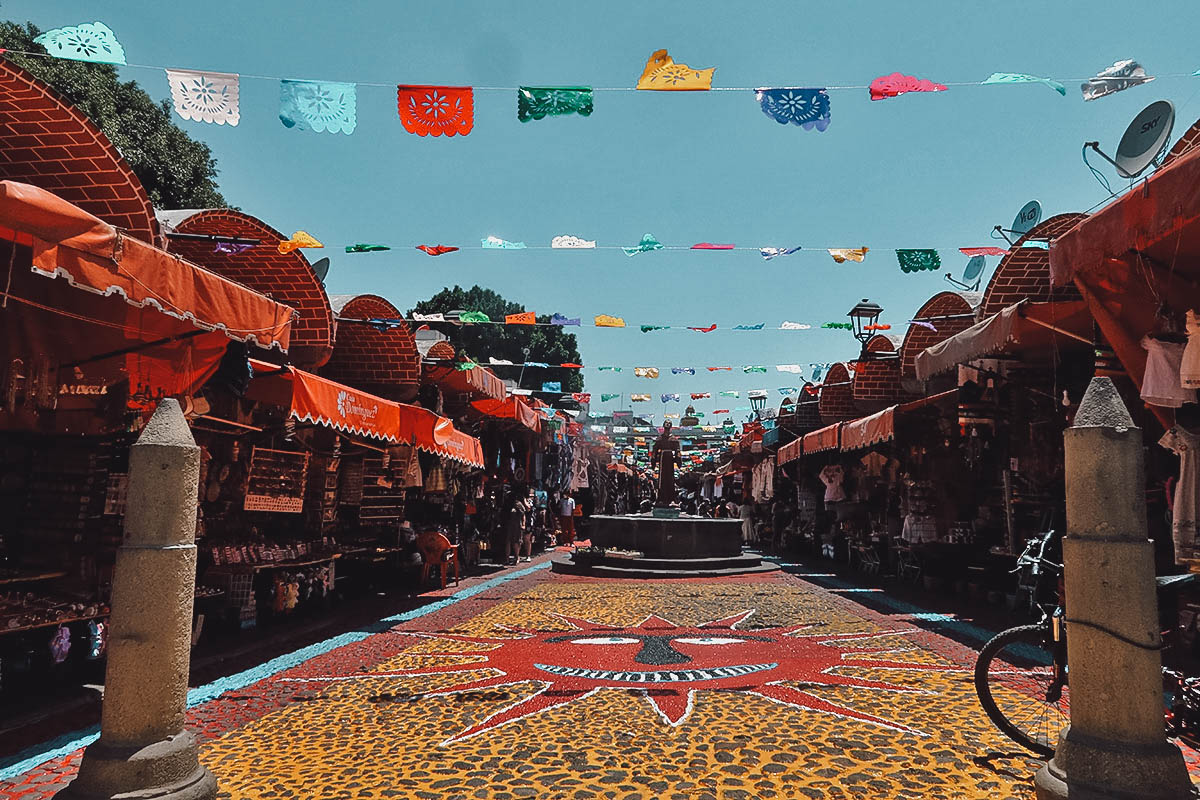
If you happen to be in Puebla over the weekend, then be sure to check out the outdoor market in Parque Analco. It’s one of the best street markets in Puebla with lots of great things to buy and plenty of good cheap food to eat. They set up on Saturdays as well but Sundays are the best time to go.
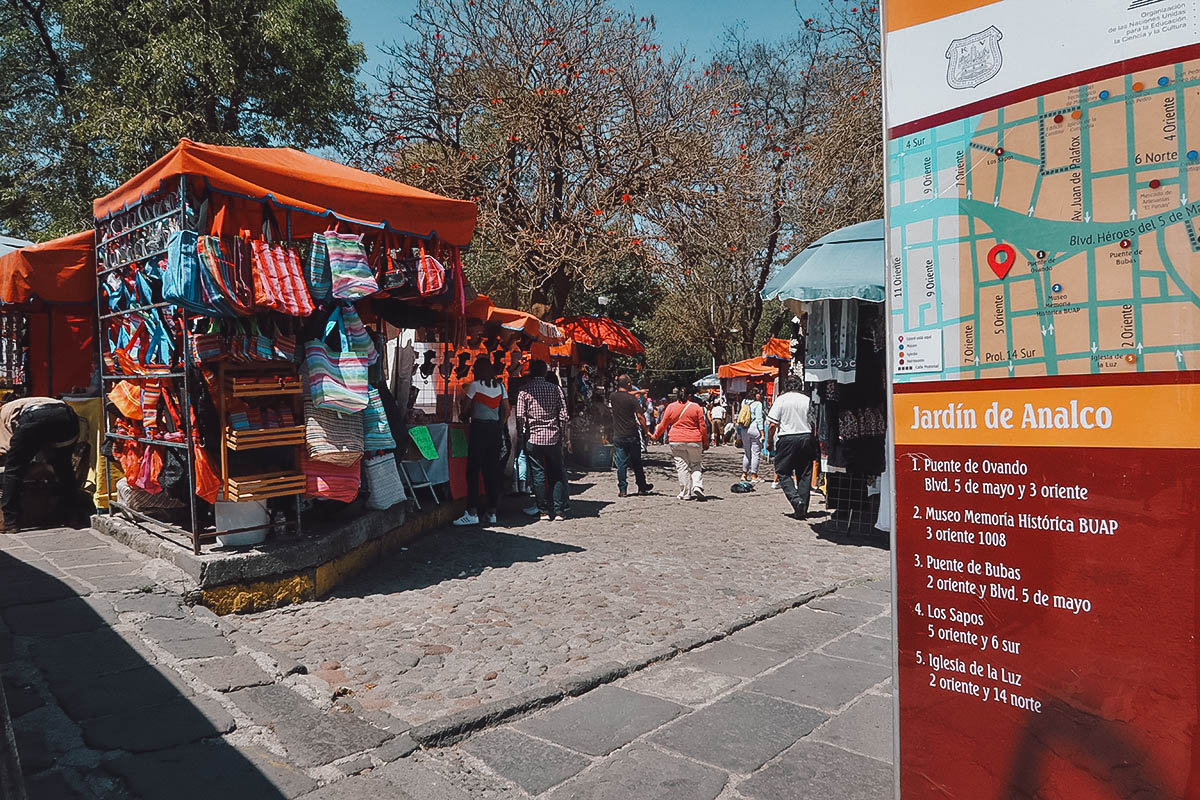
FINAL THOUGHTS ON THE BEST SOUVENIRS IN PUEBLA
Aside from the souvenirs listed above, you’ll also find many antique shops in Puebla (especially along Callejon de los Sapos) as well as stores selling silver jewelry. I haven’t walked into any jewelry shops but based on what I’ve read, Taxco in neighboring Guerrero State is the silver capital of Mexico. I’m not aware of a silver-making tradition in Puebla so I’m assuming the items for sale here are actually produced in Taxco.
Another thing, if you’re a big coffee drinker, then you may have heard that this region of Mexico produces good coffee. Unfortunately, coffee production in Mexico is centered in Oaxaca, Veracruz, and Chiapas so you can’t walk into a coffee shop in Puebla and expect to buy good coffee beans. In fact, coffee shops aren’t as common in Puebla so it’s best to leave that for one of those neighboring states.
And with that, I’ll wrap up this article on the best Pueblan souvenirs. I hope you found it useful and it inspires you to stimulate the economy in Puebla. Ha!
Thanks for reading and have an amazing time in Puebla!
Disclosure
Some of the links in this Puebla souvenir guide are affiliate links. What that means is that we’ll earn a small commission if you make a purchase at no additional cost to you. Authenticity is important to us so we only recommend products and services that we use ourselves. We really appreciate your support as it helps us keep this free Puebla travel website going. Thank you!

